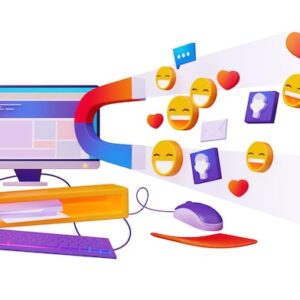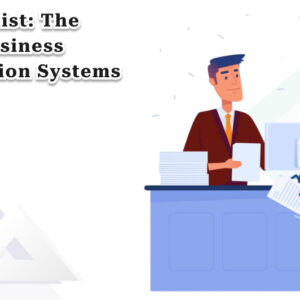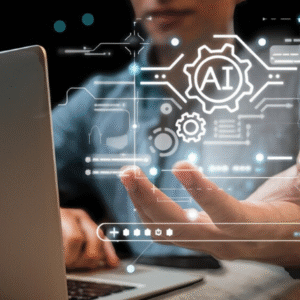By 2025, developing AI chatbots involves more than just automating frequently asked questions. The goal is to create conversational, intelligent, and scalable agents that feel like people, deliver value instantly, and integrate seamlessly with digital ecosystems. Whether you’re a seasoned AI chatbot developer or just starting your journey into conversational AI, the development tools you choose can significantly impact your chatbot’s performance and scalability. To help you stay ahead of the curve, we’ve compiled a list of the best AI chatbot development tools for developers in 2025—including top NLP engines, frameworks, low-code platforms, and analytics suites that power today’s most advanced bots.
1. Google Dialogflow CX
Best For: Multichannel, enterprise-level chatbot development
Why It’s Popular in 2025:
Dialogflow CX (Customer Experience) has become the go-to choice for developers building complex, conversation-heavy chatbots. With its visual flow builder, integrated NLU, and omnichannel support, Dialogflow CX allows for scalable, context-aware conversations.
Key Features:
- Powerful NLU engine with intent recognition
- Built-in integrations with Google Cloud, Slack, and Messenger
- Multilingual support
- Easy handoff to human agents using Google CCAI
2. Microsoft Azure Bot Service
Best For: Enterprise-grade bots with Microsoft ecosystem integration
Why It’s Popular in 2025:
The Azure Bot Service is favored by developers working within the Microsoft tech stack. It provides deep integration with Microsoft Teams, Dynamics 365, and Power Virtual Agents—making it ideal for internal and customer-facing bots alike.
Key Features:
- Visual conversation designer
- Integration with LUIS for natural language understanding
- Rich telemetry with Azure Monitor
- Scalable deployment on the Azure cloud
3. Rasa Open Source
Best For: Custom, on-premise chatbot development with full control
Why It’s Popular in 2025:
Rasa remains the preferred choice for developers and organizations that prioritize data privacy, custom training, and control over the entire conversational pipeline. It’s open-source, highly flexible, and ideal for companies with complex, industry-specific use cases.
Key Features:
- Custom NLU and dialogue management models
- Full control over data, APIs, and deployment
- Supports contextual conversation flows
- Integrates easily with Python-based ML tools
4. OpenAI GPT-4/5 APIs
Best For: Natural, human-like conversations with generative capabilities
Why It’s Popular in 2025:
OpenAI’s GPT-4 (and its successor GPT-5) have revolutionized chatbot conversations. Developers now build bots that generate dynamic, context-aware, and personalized responses on the fly—ideal for creative tasks, education, customer support, and more.
Key Features:
- Pre-trained large language models
- Few-shot and zero-shot learning
- Integration with LangChain for task-specific agents
- Used in voicebots, chatbots, and AI copilots
5. Botpress
Best For: Developers who want modular, open-source chatbot solutions
Why It’s Popular in 2025:
Botpress is an open-source conversational AI platform built specifically for developers. It features a modular architecture that supports sophisticated flows and custom integrations with minimal effort.
Key Features:
- Visual flow editor and NLU manager
- Native support for NLP providers like Dialogflow, Wit.ai, and Rasa
- On-premise hosting
- Plugin-based extensibility
6. IBM Watson Assistant
Best For: Enterprise bots with AI-powered recommendations
Why It’s Popular in 2025:
IBM Watson Assistant remains strong in 2025 due to its mature AI engine, reliability, and enterprise-grade features. It excels in regulated industries like finance and healthcare that demand transparency and compliance.
Key Features:
- Smart search and intent disambiguation
- Connects to live agents via Watson Orchestrate
- Pre-built industry templates
- Multimodal support (voice, chat, video)
7. LangChain
Best For: Developers building LLM-powered agents and multi-step workflows
Why It’s Popular in 2025:
LangChain has emerged as a critical library for developers working with language models. It allows chaining of LLMs with tools, memory, and logic—making it perfect for building intelligent AI agents beyond simple Q&A bots.
Key Features:
- Framework for building autonomous agents
- Integrates with OpenAI, Cohere, Hugging Face
- Memory persistence and multi-turn capabilities
- Custom tool invocation (search, calculations, APIs)
8. Twilio Autopilot (and Twilio AI Tools)
Best For: Building SMS and WhatsApp chatbots with voice capabilities
Why It’s Popular in 2025:
Twilio remains the top choice for developers creating bots for SMS, WhatsApp, and voice-based customer support. With enhanced AI features in 2025, Twilio Autopilot now supports dynamic conversations powered by LLMs.
Key Features:
- Deploy to WhatsApp, SMS, IVR
- Seamless API integration
- Custom voice flows with Twilio Studio
- Enhanced with generative AI support
9. Tidio / Landbot (Low-Code Options)
Best For: Non-technical teams or developers building MVPs quickly
Why It’s Popular in 2025:
Tidio and Landbot offer drag-and-drop interfaces for building chatbots quickly, making them ideal for developers who want rapid prototyping or marketers who want to manage bots independently.
Key Features:
- Visual chatbot builder
- E-commerce and CRM integrations
- Built-in AI response generation
- Multichannel deployment (web, WhatsApp, Messenger)
10. ChatGPT Code Interpreter / Function Calling
Best For: Developers creating advanced chatbots with tool-use capabilities
Why It’s Popular in 2025:
ChatGPT’s function-calling feature allows developers to create bots that can perform complex operations—such as querying databases, calling APIs, or performing calculations—in real time. This has opened up new possibilities for AI agents with real utility.
Key Features:
- Dynamic function invocation
- Structured API response generation
- Enhanced memory and contextual logic
- Ideal for building AI copilots and assistants
Choosing the Right Tool: What to Consider
Before diving into any tool, evaluate based on:
Criteria Considerations
Use Case FAQ bot, sales assistant, task automation, etc.
Deployment Needs Web, mobile, voice, on-premise, cloud
Privacy Requirements GDPR, HIPAA, internal data policies
Customization Level Open source vs. managed platform
Integration Capabilities CRM, APIs, payment systems, etc.
Team Skillset NLP expertise, ML ops, backend development
Conclusion: Equip Yourself with the Right Tools in 2025
AI chatbot development is more advanced—and more accessible—than ever before. From open-source frameworks like Rasa to cutting-edge LLM platforms like OpenAI and LangChain, developers in 2025 have a rich toolbox at their disposal.




